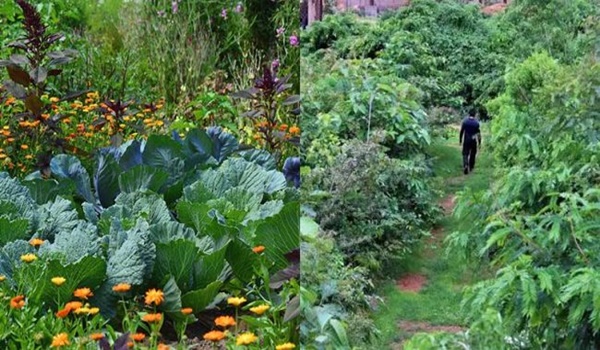Martin Crawford, a pioneer in forest gardening, shows the world a way to plant a food forest, and grow more than 500 plants with a few hours of work a month.
Gardening is one of the most beneficial hobbies one can develop. In addition to providing nutritious veggies and fruits for the entire family, and beautiful flowers to decorate the home, gardening is great for our health, the community, and the environment.
It boosts our strength, heals and empowers, improves mood and memory, lowers stress, and helps us fight diseases. The coronavirus pandemic has brought many concerns, and cut us off from social gatherings, so a lot of people started cultivating gardens.
This impulse is an amazing idea, but keep reading to discover a way to maximize your yields and minimize your efforts!
Have you ever asked yourself why some plants prosper better in forests, on their own, without any special care than in our gardens? For instance, no one trims, nourishes, or waters the wild veggies, and yet they grow better than our garden plants ever could if we weren’t so devoted to them.
It turns out, we may be doing things improperly. The diversity of the forest gives the plants the needed flexibility to deal with the harsh climate conditions and environmental factors that influence their growth.
It is one of the crucial factors in maintaining a productive ecosystem with natural stability.
The monoculture approach we take leaves the soil in a poor state for agricultural practices after only a few years. Namely, flatly planting the same crops in one garden drains the soil of some of the essential nutrients and creates additional compounds that might affect growth and production.

Plus, the absence of diversity increases the risk of diseases. The best way to prevent this and help the soil renew the needed nutrients is to try crop rotation.
Yet, the inconsistency in produce makes this approach unfit for many commercial farmers. Therefore, to address the problems caused by monoculture, people have invented forest gardens.
They imitate natural ecosystems and include dozens of varieties and species of plants to boost diversity and production. Martin Crawford, a pioneer in forest gardening, is a British author, and the founder and director of the Agroforestry Research Trust, a UK-based agroforestry non-profit.
He maintains that monoculture is slowly harming the soil by taking away its nutrients:
“What we think of as normal, in terms of food production is actually not normal at all. Annual plants are very rare in nature, yet most of our agricultural fields are filled with annual plants. It’s not normal. What’s normal is a more forested or semi-forested system.”
Back in 1994, he started growing his extensive forest garden with countless stems and seeds from various plants. Every year, he added more species, and nowadays, over 500 edible plants are growing in the astonishing ecosystem in his garden.
He explains there are two categories of plants in the food forest:
- directly useful plants, which include fruit trees, veggies, all types of nuts, tuber plants, timber, and logs on which mushrooms grow.
- indirectly useful plants, or system plants, which boost the function of the system, such as flowers that boost pollination, mineral-accumulating plants, and nitrogen-fixing plants.

He says:
“With such a diverse system, whatever happens with the weather, most of your crops will probably do fine. Some may fail, some may do better. That’s very important going into the future because we don’t know exactly what’s going to happen to our weather. So by having a diverse system, it gives you maximum resilience.”
There are about seven vertical levels of growth in a forest garden, as follows:
- Canopy trees,
- Smaller trees,
- Shrubs and bushes,
- Perennials,
- Groundcover layers,
- Root crops,
- 7. Vines (climbers).
The different layers give each other support, diversity, sunshade, wind, and storm protection. The main advantage of the food forest is its timesaving quality, as Crawford needs only a few hours every month for maintenance.
Just like wild forests, it takes care of itself. The different types of plants provide diversity to fight against diseases and resist climate changes. Furthermore, while it may not seem easy at first, in the long term, the food forest is much more efficient and gratifying than the gardens we are used to.
Of course, you’ll need to work harder in the early months and perhaps years of cultivating the garden. It would also be more expensive at first, but in a while, your food forest will require very little maintenance.
As Crawford notes, the forest plants are “more like being out in nature than being in a cultivated garden”, and adds:
“It can seem overwhelming, there are so many species. You shouldn’t let that stop you from starting a project, because you don’t have to know everything, to begin with. Just start, plants some trees, and go from there.”
Watch the documentary below to learn more about forest gardens:
The short film was a huge success, as an increasing number of people have become interested in food forests in the past few years. Therefore, a feature-length documentary is now in the works.
“ Edible Landscapes, The Food Forest Revolution” is a documentary film aiming to inspire people all over the world to learn about and plant food forests.


